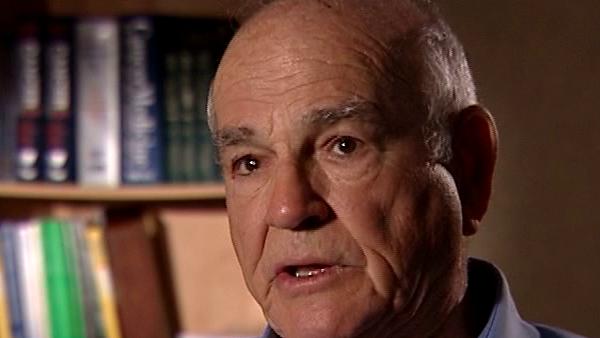Now Wolf had an interesting career. He was born in Poland before the war and as a young man he and his family fled eastward. They ended up in Siberia and Wolf went to medical school there and so on, and then he… then he eventually came back to Poland after the war. He was a… a secretary, or a minister of health in a province and there, he was… he was in charge of public health in a Polish province, but then he and his family departed again in the ‘60s when there was another upswing of anti, you know, pogroms, of anti-Semitic activity for a period then. So he fled, came here. I would say, you know, they departed and, and looked around for a job, came here and spoke to us and I think we would have offered him a job, but he had to… he had another job offer in New York City and he took that and I think in retrospect I, I mean I would have loved working with him, he was a fine guy, but he did very well there. In any case so they… they obtained the vaccine from Merck and he designed one of the, I think one of the best vaccine field trials that had ever been done. It involved virtually... he had to do some screening, but he looked around for a community group population that was highly susceptible to hepatitis B and, initially, they looked at the Down syndrome patients, but, for a variety of reasons, that was not a good choice. First of all, they were hospitalized, mentally-retarded children, not… secondly Down syndrome patients have a very altered immune response so you wouldn't expect them to respond to vaccines in general. That was... the immunology was fairly well known, but there was a… a group in New York City and elsewhere, that was the male gay community, who had an incredibly high attack rate for hepatitis B and they had like a 30% annual attack rate. That means the probability of not getting hepatitis over the course of several years of being part of that community, the probability of getting hepatitis was very high, 80–90% maybe, and they were very, they were well educated, well informed, health-oriented population, very cooperative, and he enlisted about, eventually about a thousand and there was a… there was a… a coded test. That is, some of the participants were given the vaccine and some were given a placebo, an injected one so it was very similar. The subjects didn't know if they got the vaccine and the people who were administering and who — the vaccine — and who'd initially looked at the data also weren't aware of it until the code was broken. Well, they followed them for, well, eventually for a couple of years but initially for about a year or so and by that time, you know, when they… they broke the code, and did find the people with vaccine and those with the… not with vaccine; the results were… were amazing. I mean the attack rate was well over 30% and maybe 30–40% in two years and… and the people who had been vaccinated, a very small number developed evidence of hepatitis, serological or clinical and those, the probability is they had been infected before they had the vaccine, so… so the… the protection rate was over 90%. Well, there are very few vaccines that have a 90%... that works on 90% of the people. So he did that study and it was published in the early 1980s and based on that study it was approved by the FDA. Now, that's got to be the smallest study which led to... can you guess how many people were involved in the polio vaccine?
[Q] Oh, must be 10,000.
One point two million people were involved in the childhood polio vaccine and they're now preparing for a vaccine for Aids, for testing. They're actually setting up test programs for a vaccine that doesn't exist yet. That's going to be tens of thousands at a cost of millions, tens of millions. I don't think it cost more than a few hundred thousand dollars to do that study.
[Q] That must have been incredibly gratifying for you to see… to see that.
It was great. It was terrific. You know, we always thought it would be good but, you know, there's nothing like proof. There were studies since then, but that study of Wolf Szmuness was so… was so good. He had a tragic end. He… he developed cancer of the lung and the first manifestation was metastasis on the brain, which often happens and he became in a way, deranged, you know, briefly. And he was in… he was on a travel in Brazil at the time and he was actually jailed because of his behavior so it was... and imagine, you know, having come through this experience, but in any case he... I went up to see him after his treatment, you know, decreased the size of the tumor and all but… but he… he did a lot, you know, for that.





